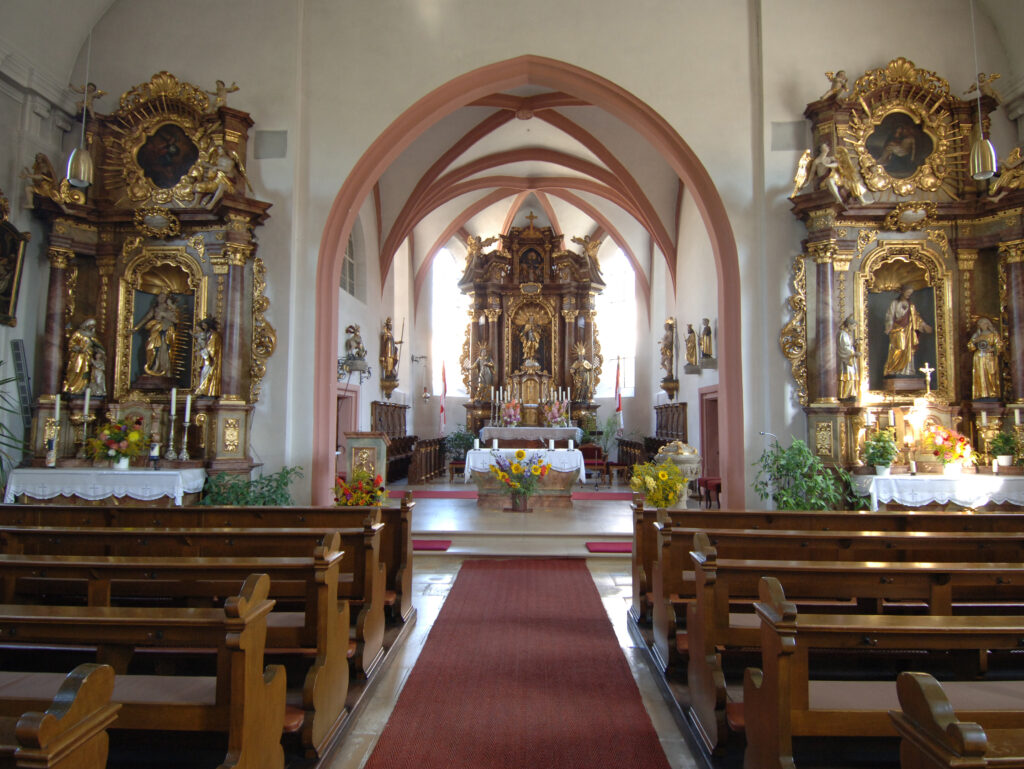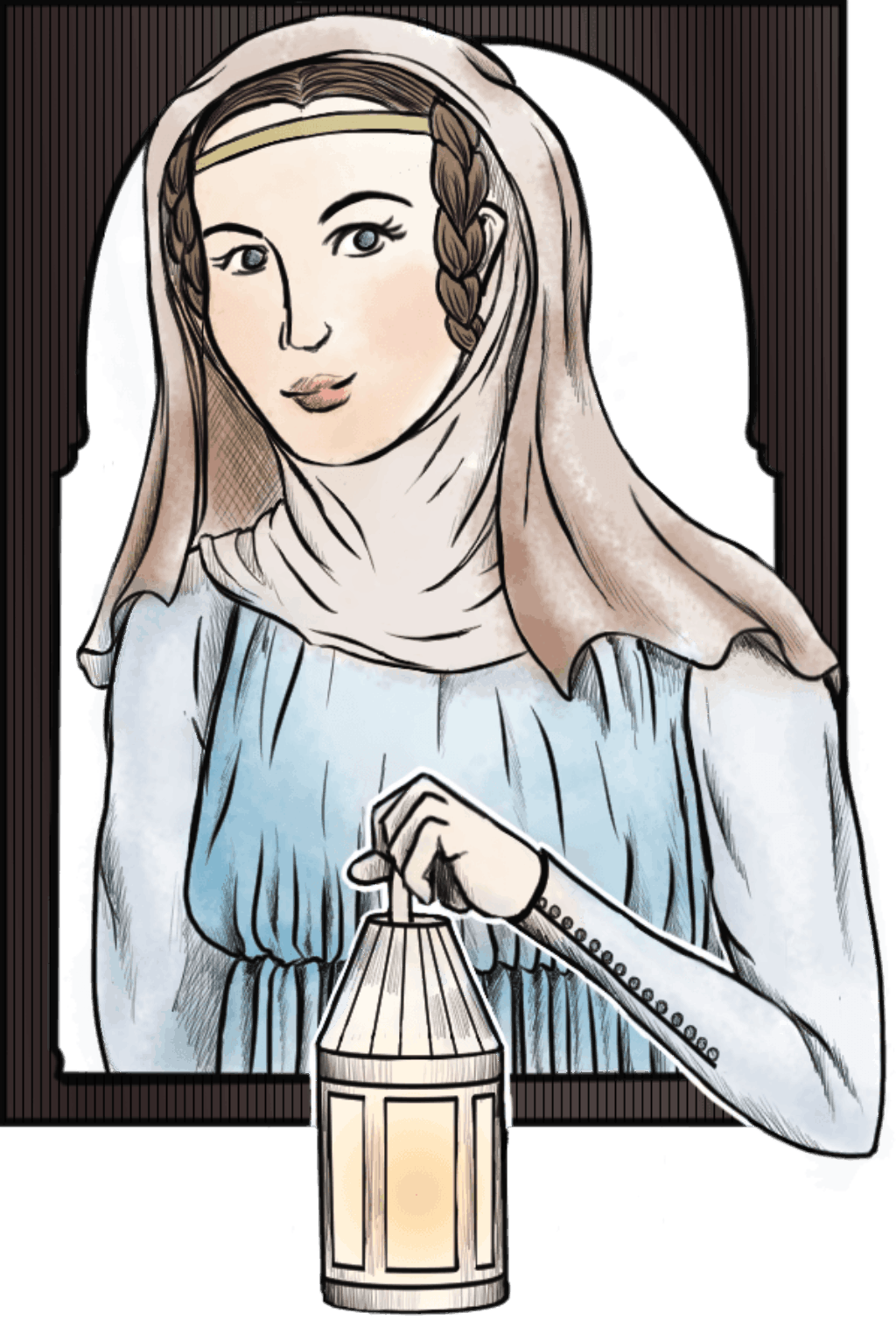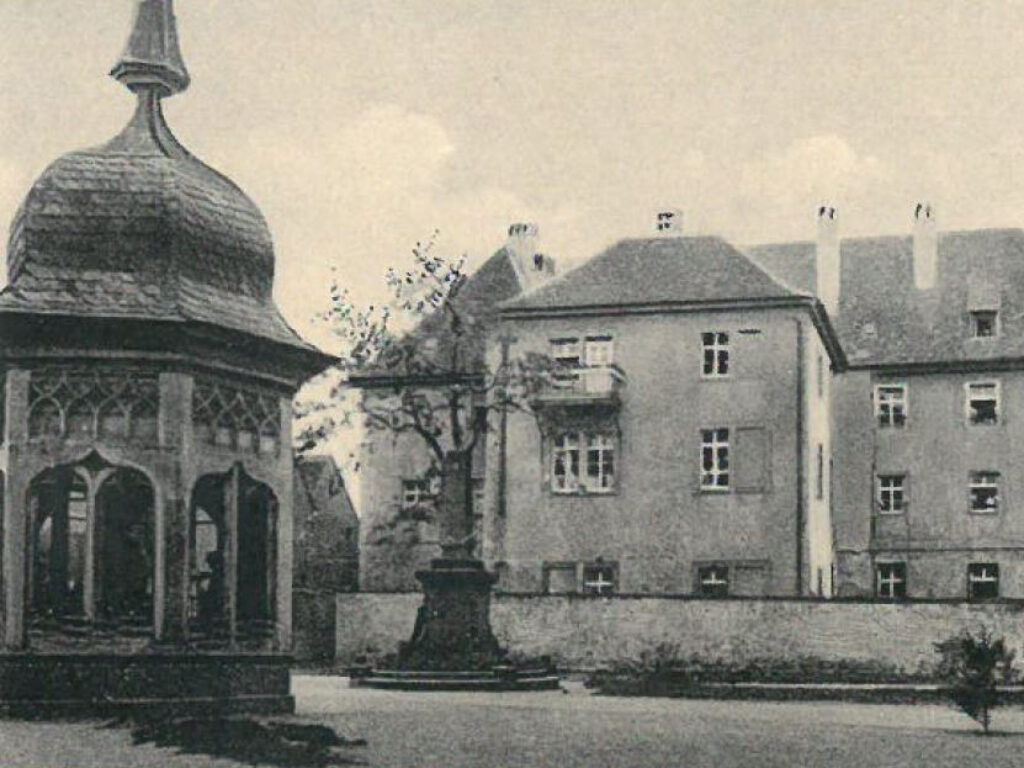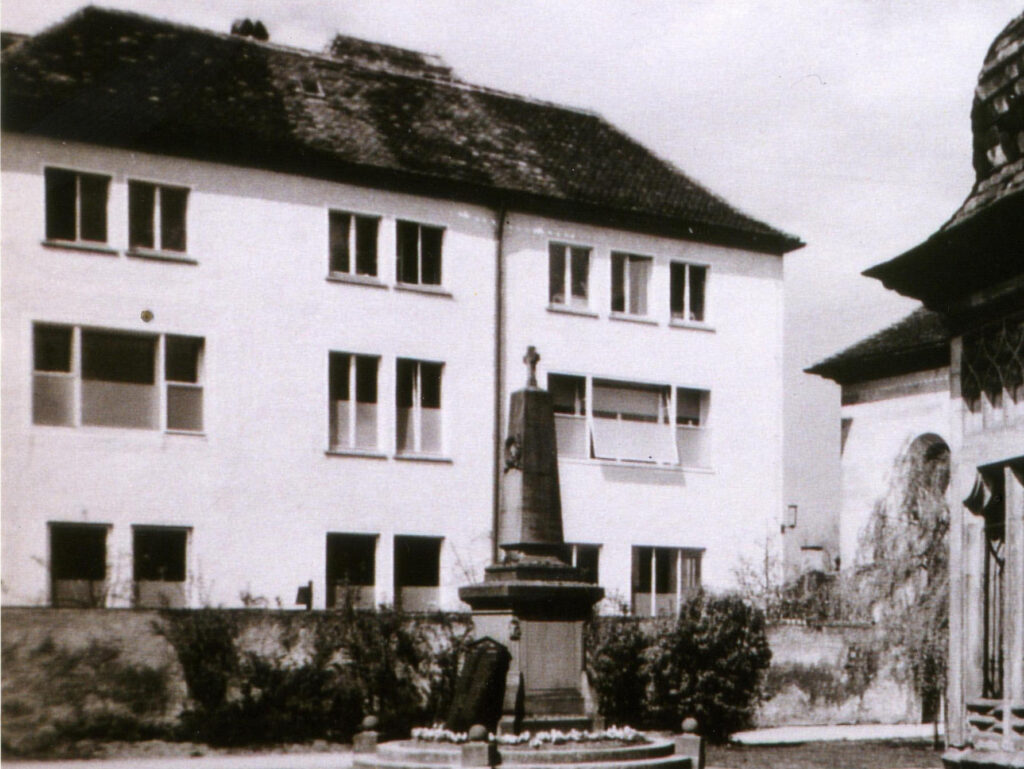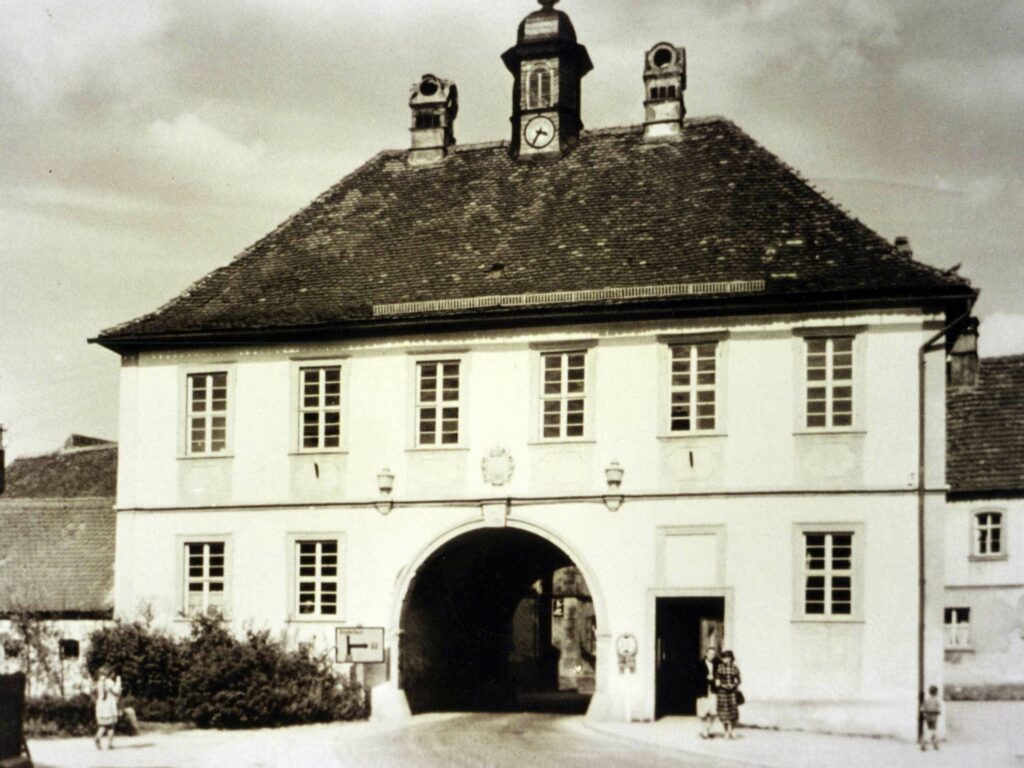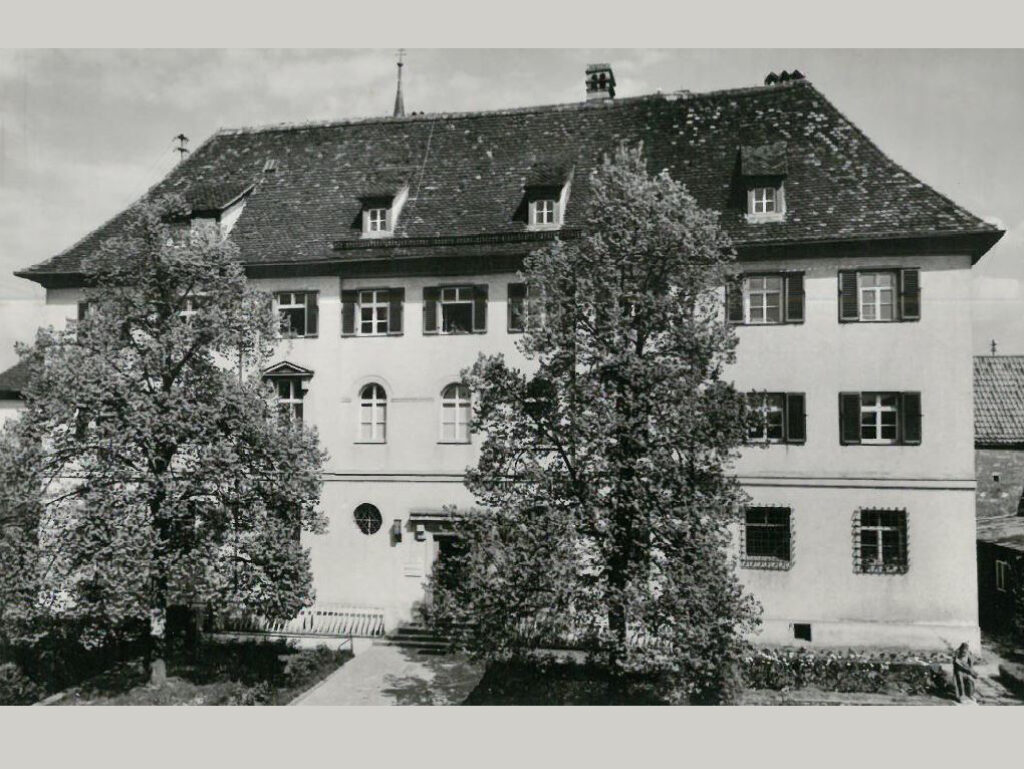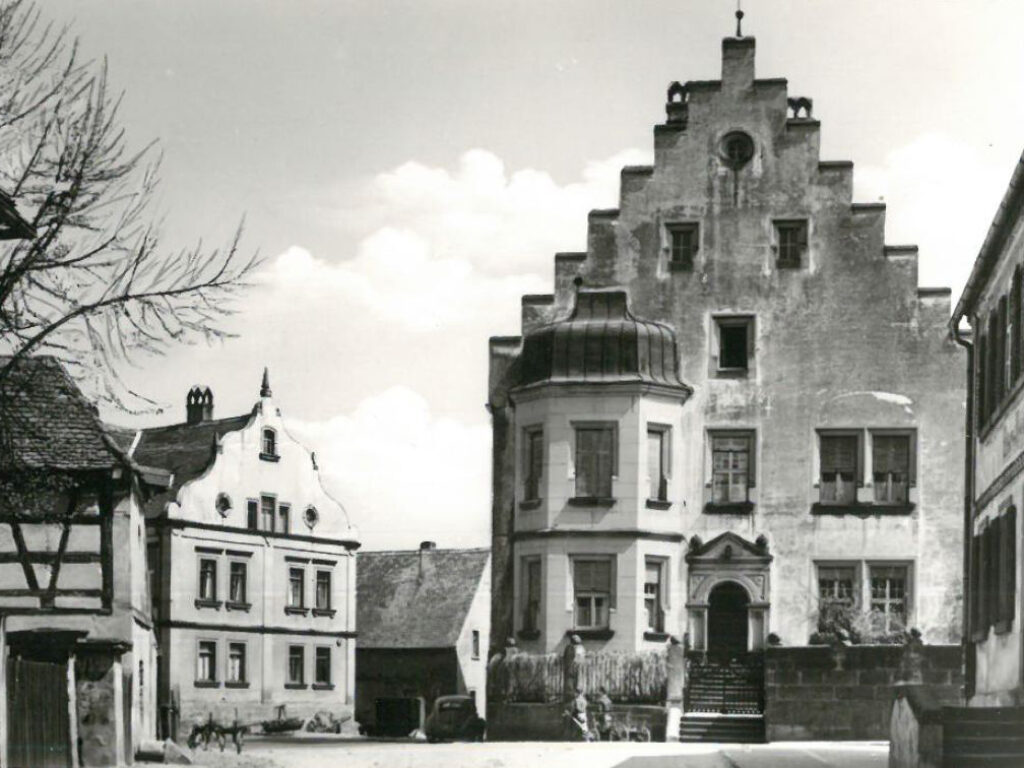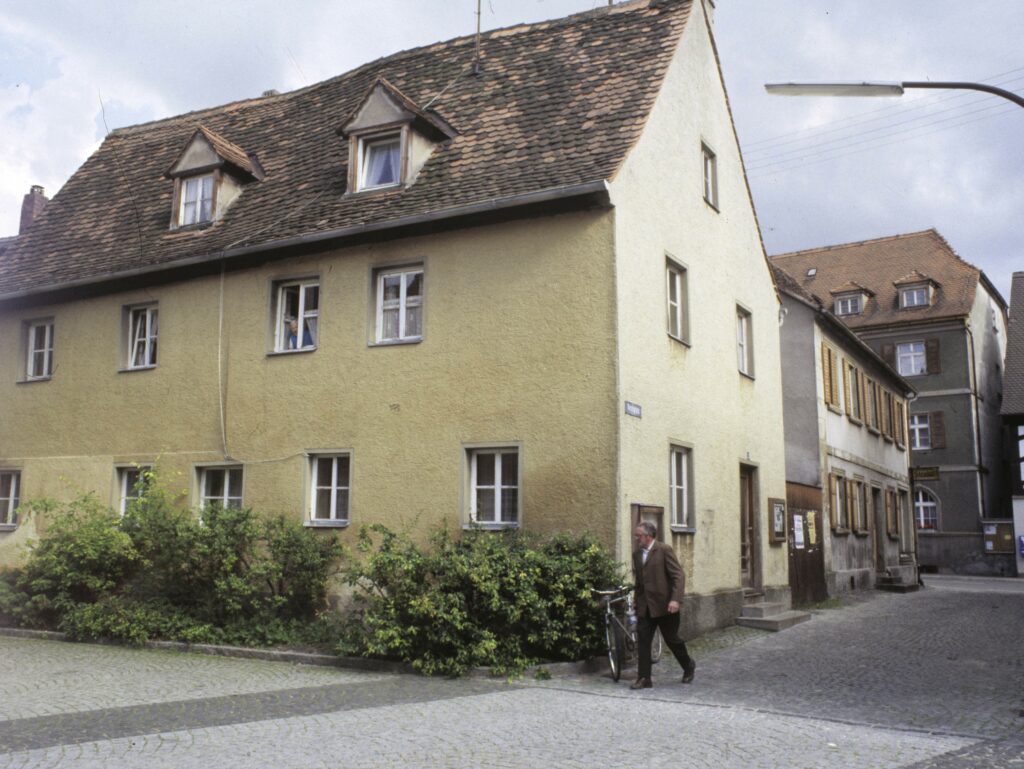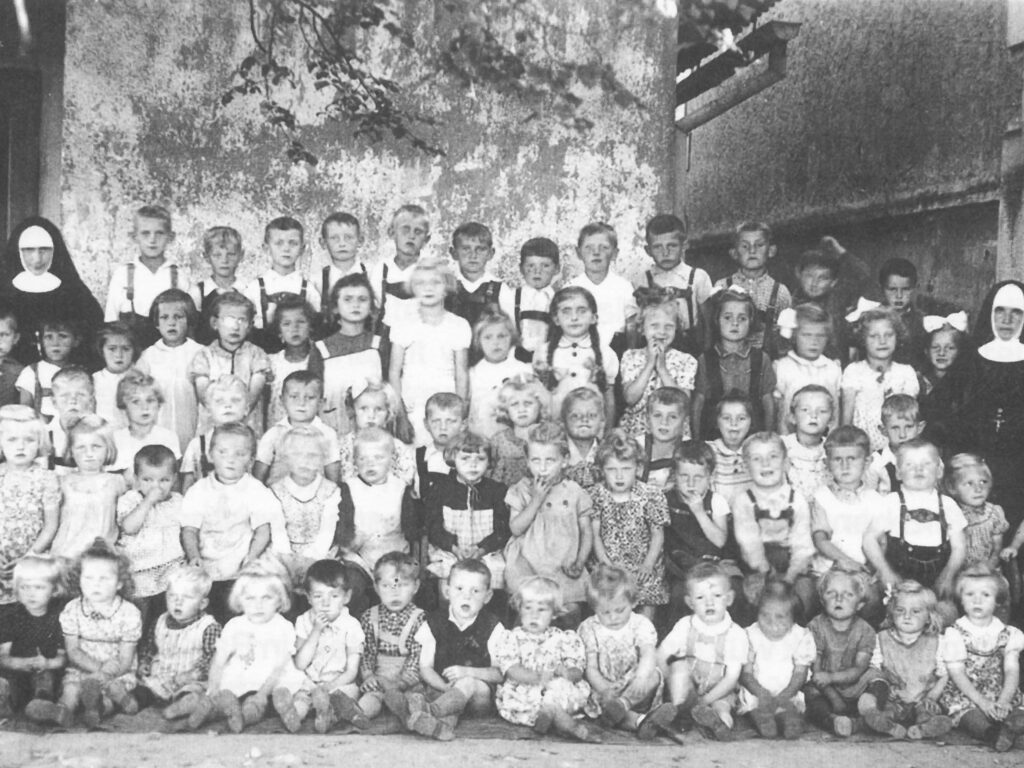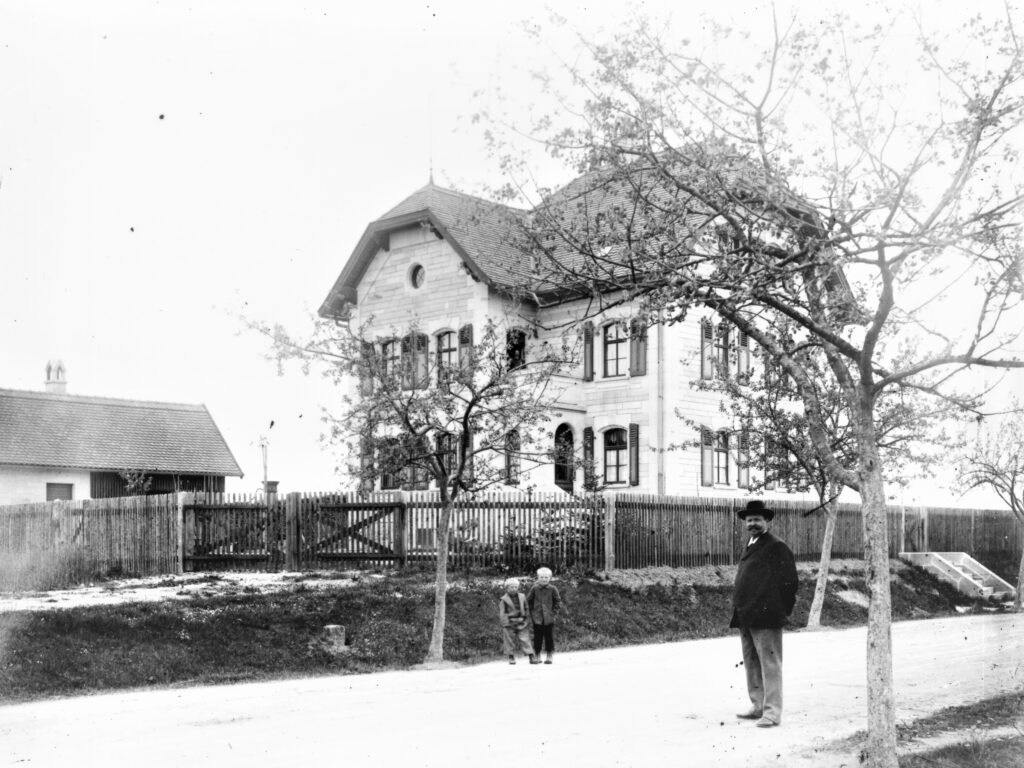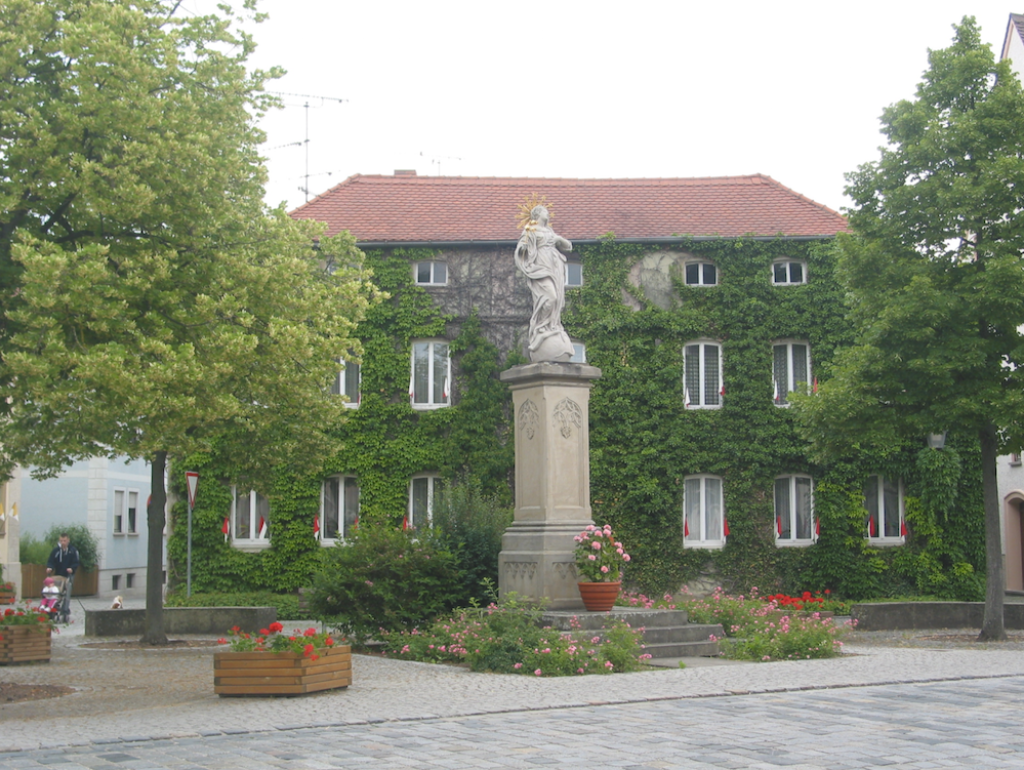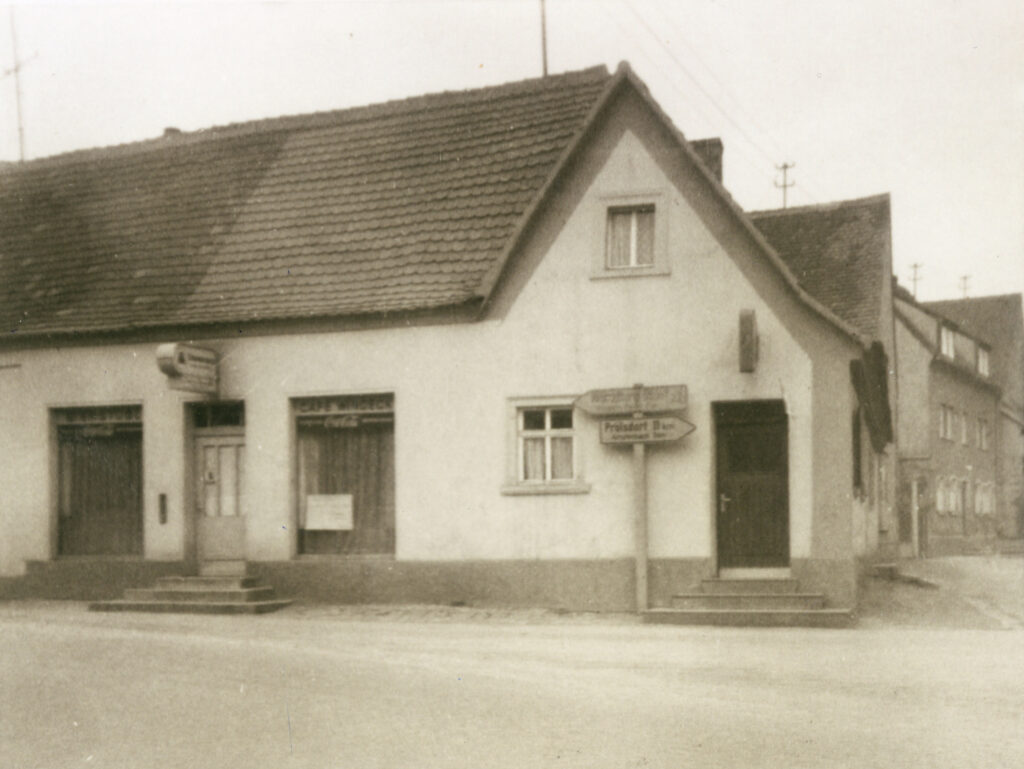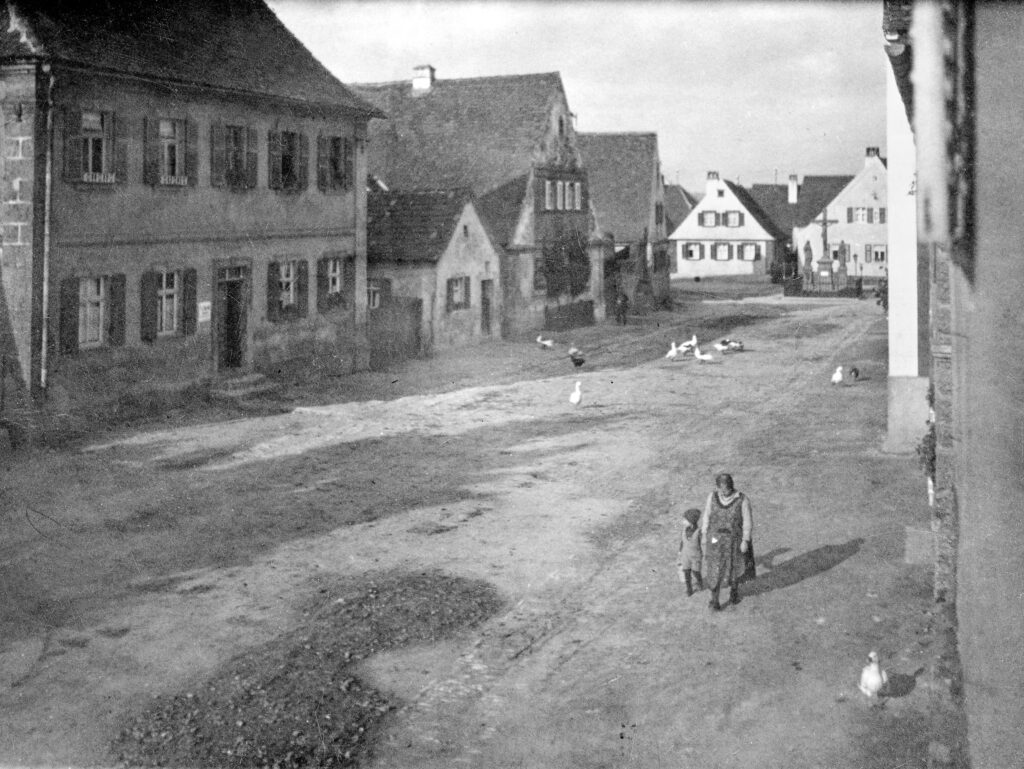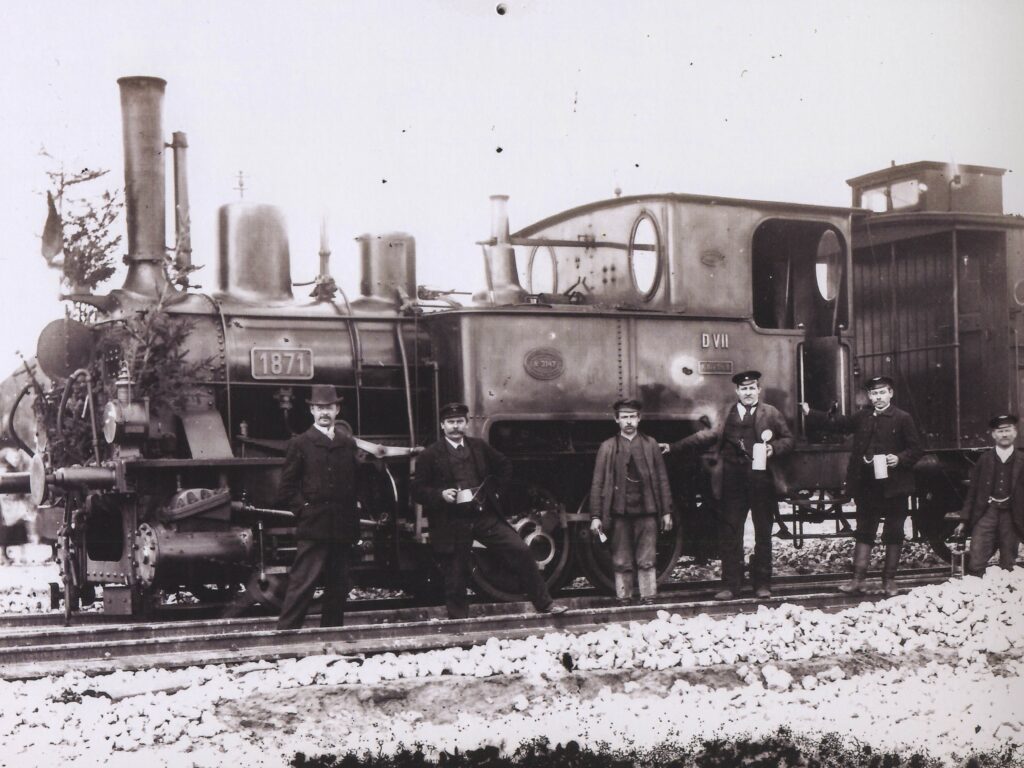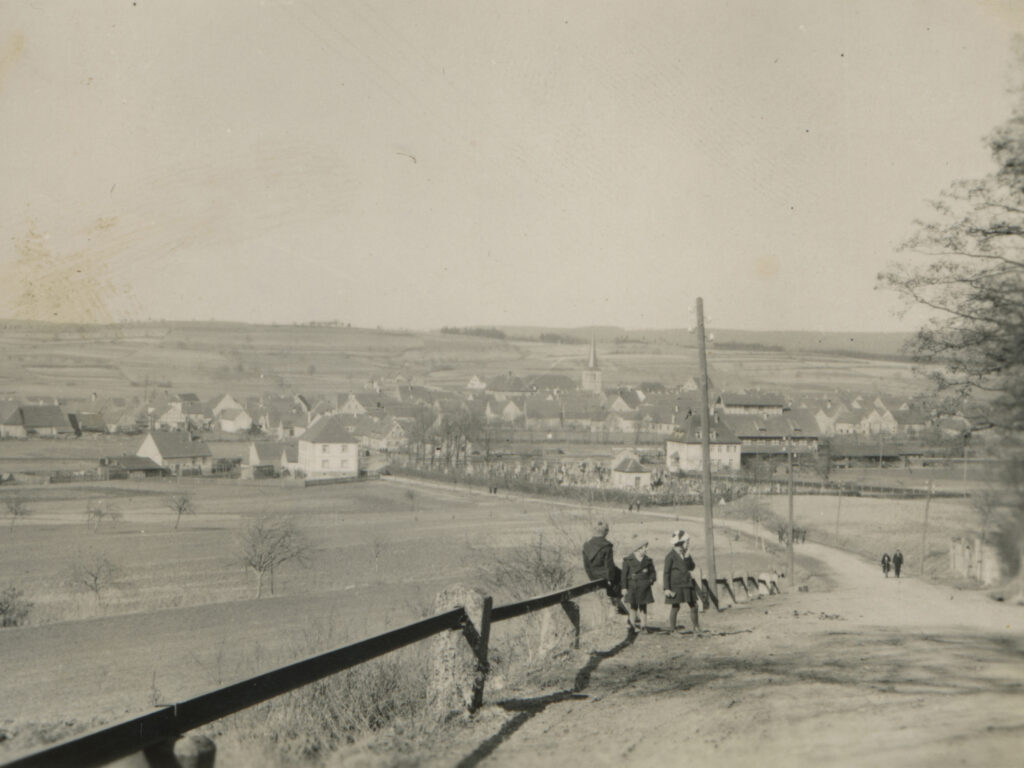The Church Square
Station 3
A place of worship has stood at this place for more than 1,000 years. Originally it was probably a small chapel which was once part of a castle. The late Romanesque base of the present-day tower dates from this period.
It had to be enlarged in the 14th century, since the congregation had grown considerably. The new church was consecrated on 29.09.1410. The citizens of Burgebrach still traditionally hold their parish fair on the first Sunday after Michaelmas.
In 1454 the church was extended by the Gothic choir tower which stands to this day. In 1731 the church was in such a bad state that a new one had to be planned.
The famous master builder Balthasar Neumann had originally drawn up the plans for the new church, but when Abbot Wilhelm Söllner took office, he had it built from a new blueprint of his own.
Famous sculptors of the day adorned the building inside and out with richly figured decorations. The late Gothic Mount of Olives group on the church square is probably one of the most valuable structures in Burgebrach.
The nave was extended to the west in 1925-1927 and designed in the neo-Baroque style. A sacristy and a new north and south portal with a Sacred Heart of Jesus relief were also added. The centre of the nave was re-modelled, the former beamed ceiling clad and a pilaster incorporated. Six new leaded glass arched windows were also inset.
The interior was completely refurbished in 1978-1980, in order to comply with the Guidelines of the Second Vatican Council. The painter Anton Greiner created the fresco in the centre panel of the church ceiling during the renovation.
The cemetery was situated by the present-day church square before it was relocated for hygienic and space-related reasons in 1810. St. Michael's Chapel (Michaelskapelle) with a charnel house (ossuary) stood on the site of the Edith Stein house.
In 1817 a school was opened in the chapel, which had to be demolished in 1850 due to disrepair. Lessons moved to the nearby parish hall until a new school was built on this site.
A place of worship has stood here for more than 1000 years! First it was a small chapel, which was later extended to become the church you see here today. The marvellous decorations in the interior were created by many famous sculptors, e.g. from the Veit Stoß school. The bell is rung every evening, in summer at 9 pm and in winter at 8 pm, because of a legend. It is said that Chatelaine Ursula von Windeck got lost in the forest and only found her way home because of the sound of the bell.
96138 Burgebrach

